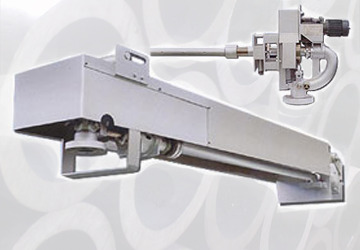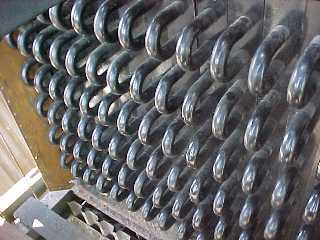
The Ultimate Guide to Sootblower Replacement Parts
Sootblowers are essential components of industrial boilers. Just like the name implies, they can remove soot and ash buildup from a boiler’s heat exchange surfaces.
Home » What Is A Rotary Dryer Used For?
Because of their ability to address a widespread headache in materials processing, a rotary dryer, also known as “tumble dryers” or “rotary drum dryers,” are commonplace in various industries and applications. In addition, rotary dryers are an economical solution for moisture removal from wet materials. However, you may still be asking: How does it work, and what are the primary applications of this technology?
A rotary dryer removes the moisture from solid materials used in industrial processes. From the outside, the dryer looks like a large cylinder supported by cement or steel beams. The cylinder or drum of the dryer can either lay horizontal or at a slight decline and slowly rotates along its axis.
Lining the cylinder are flights or “lifters” that pick up material as it enters the drum. The flights lift the material as the drum rotates, and the material eventually falls back to the bottom due to gravity. As it falls, it passes through heated air, heating the material to evaporate the moisture content. In batch drying, a set amount of material is added to the drum and removed when it reaches a specified moisture content. Other dryers continuously process moist content for constant production.
There are two primary types of rotary dryers: direct and indirect. Direct dryers mean that the air inside of the dryer is heated directly, making direct contact with the falling material. This type of dryer is the most efficient and most common. Indirect dryers have a tube or wall separating the heated air from the material to prevent any contact directly with the material, which reduces efficiency but allows for more precise temperature control and eliminates the entrainment of fine material.
Depending on the application, rotary dryers can be customized in a few different ways. For example, different flight shapes can be designed depending on the amount of material you desire to pick up at a time and how slowly it should be released. Additionally, the cylinder can rotate at varying speeds depending on the size and weight of the material. Another customization is whether the air will flow co-current (parallel with the material) or counter-current (against the material’s movement).
Because of the cost-effectiveness of operation and the usefulness of drying wet and moist products, rotary dryers are used in a variety of applications. For applications that rely on shipping and distribution of goods, the cost savings from shipping dried goods compared to moist goods can often recoup the dryer development costs within a few years. Additionally, some processes require dryer matter for further production steps.
A common use for rotary dryers is to remove the moisture from food scraps and other products used for animal feed. One example is citrus peel and citrus pulp used particularly for dairy cow feed. After facilities use the fruit to produce orange juice or peeled fruit for grocery stores, the remaining pulp and peel are dried and turned into pellets. The pellet form dramatically reduces costs associated with shipping while retaining much of the nutritional value. Additionally, the dried form will not sour or spoil as quickly as the raw form.
Ethanol, an alternative fuel source, is created by fertilizing the sugars in feedstocks such as crops or wood residue. Before the corn is processed and ground into flour, it needs to be dried. A rotary drum dryer is an efficient and economically-sound drying method for ethanol production. In the United States, ethanol production is concentrated in the Midwest because of its proximity to corn production. Which is one of the most commonly used feedstocks in ethanol production.
Waste is a primary ingredient in fertilizer production. However, waste has high moisture content. It needs to be dried before it can enter the following stages of production to become fertilizer. Rotary dryers are a commonly used method for this drying process.
Wood particles used in applications such as particle boards or oriented strand boards (OSB) must be dried before production. A rotary dryer removes most of the moisture from the particles. They are sorted by density and orientation, mixed with resins for durability, and pressed under high heat and pressure for the glue to bond.
At Industrial Boilers America, our rotary dryers can handle the demands of any industrial application. We have decades of experience designing and manufacturing rotary dryer systems and other auxiliary equipment for industrial boilers, taking a hands-on approach to ensure that our system design meets your specifications. Reach out for more information or to request a quote.
At Industrial Boilers America, we lead in providing the development, licensing, and deployment of Industrial Power plants. We partner with other leaders of communities and governments to foster long-term relationships that create sustainable energy, jobs, and social responsibility. Our philosophy that sustainability should be rooted in the betterment of the ecosystem rather than profit allows us to provide services that will enable our partners to reinvest in themselves, resulting in a sustainable community.

Sootblowers are essential components of industrial boilers. Just like the name implies, they can remove soot and ash buildup from a boiler’s heat exchange surfaces.

Boilers provide essential heating and steam generation for industries ranging from power production to manufacturing. To ensure safety, efficiency, and functionality, rely heavily on sophisticated

Industrial boilers are essential for keeping the world moving. Understanding the critical industrial boiler parts ensures efficient operation, safety, and longevity of equipment. Main Industrial